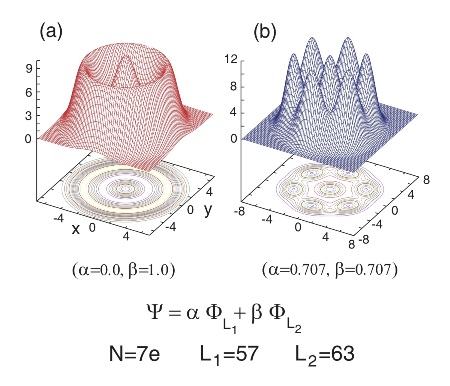According to a new theory developed by Georgia Institute of Technology physicists, liquid and associated solid phases of two-dimensional electrons exist together in the presence of a magnetic field. The theory also explains the phase transition when the field changes.
 Uzi Landman. Credit: Georgia Institute of Technology
Uzi Landman. Credit: Georgia Institute of Technology
The new theory hypothesized by Uzi Landman and Constantine Yannouleas of the School of Physics of Georgia Tech explains the experimental results reported by a team of scientists from Purdue, Florida State and Princeton universities. They have published their research findings in the Physical Review B journal.
A new Hall conductance step at v=1/m, where m=3 at (1/3)e2/h was discovered experimentally for two-dimensional electrons at intensified magnetic fields and low temperatures in 1982. Here, ‘e’ is the electron charge and ‘h’ is the Plank constant. Robert Laughlin explained this finding theoretically by means of a new quantum fluid form in the following year. These findings represent theoretical advancements in the perceptive of the fractional quantum Hall effect (FQHE) liquid states and matter, which are derived from the highly-correlated characteristics of the electrons of these systems and are known as novel states of matter.
The physicists have developed an integrated microscopic method in combination with accurate numerical solutions to the interaction between the new quantum fluid form and the associated Wigner crystal, the hexagonally aligned two-dimensional electron solid phase in the vicinity of the 1/3 fractional filling. The key benefit of their technique is the utilization of a single type of variational wave function for describing both the quantum liquid and pinned solid phases.
The physicists explained that away from the accurate fractional fillings, for instance close to v=1/3, inferior pinning perturbation may increase the energy gaps between neighboring angular momentum symmetry-conserving states. These states are coupled to produce broken-symmetry ground states with densities demonstrating spatial crystalline patterns. However, the energy gaps between the ground states at fractional fillings v=1/3 and nearby states is large enough to stop disorder-induced mixing, thus maintaining its quantum fluid state, they added.
The work also demonstrates that the development of the crystalline features through the pinning perturbations is a result of the existence of crystalline correlations within the symmetry-conserving states. Moreover, the physicists have formulated and validated mixing rules that control the behavior of the disorder-pinned crystalline states. The measured results have been extrapolated to the thermodynamic limit to develop a hexagonal Wigner crystal with improved stability caused by quantum correlations.